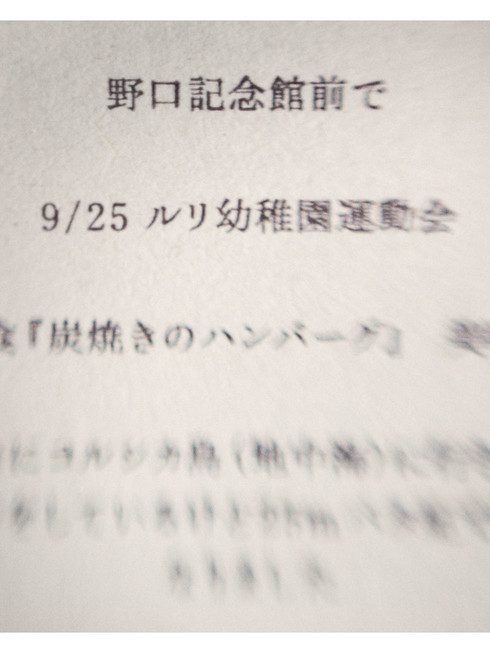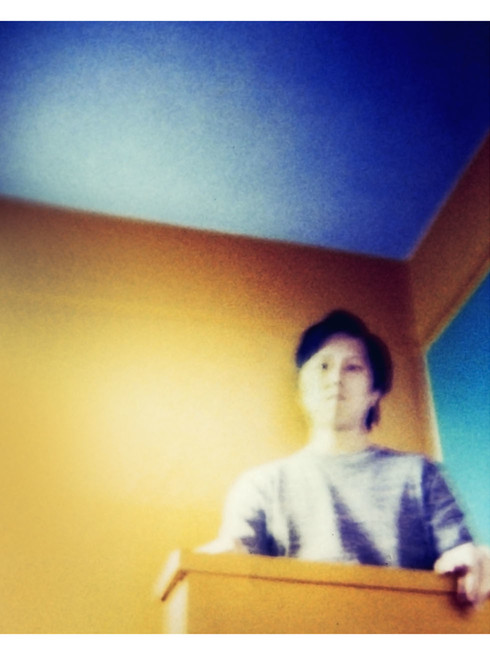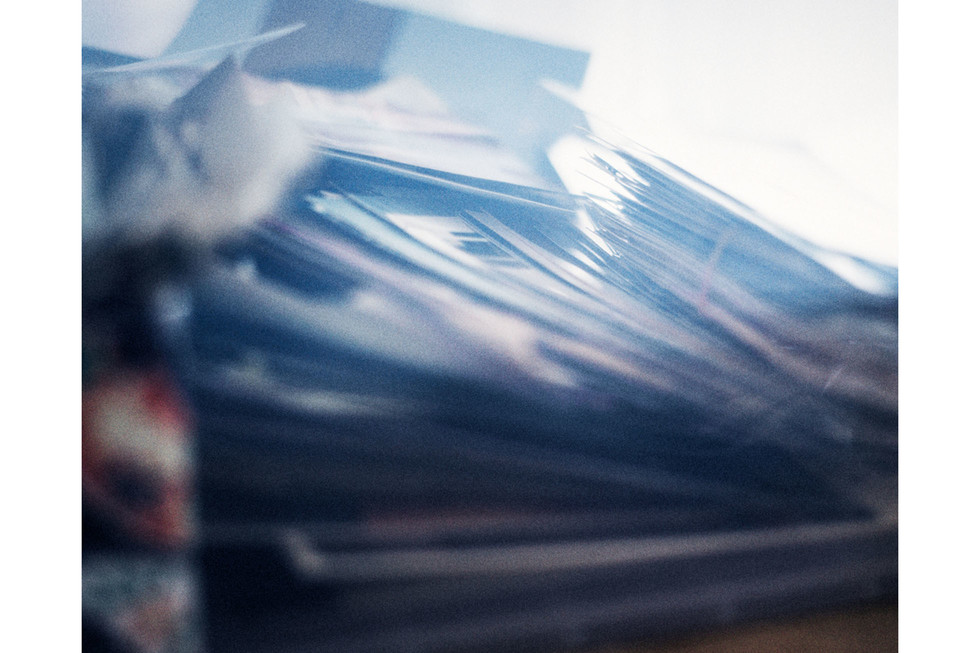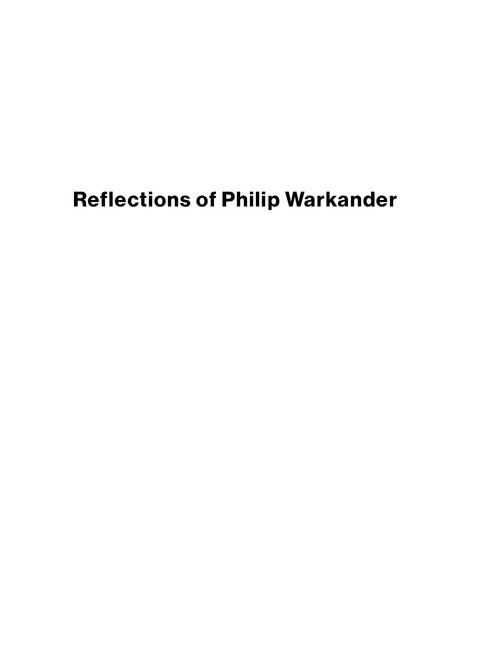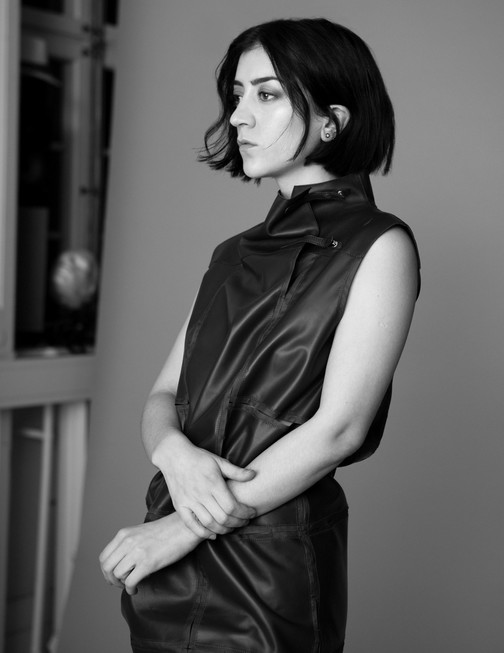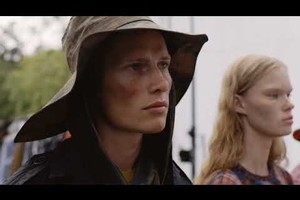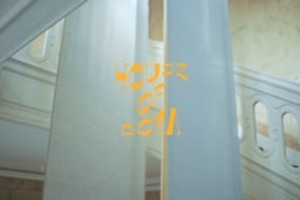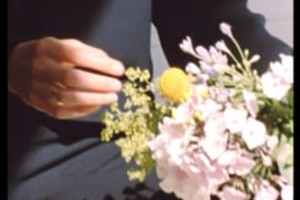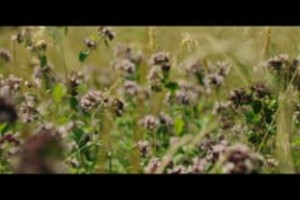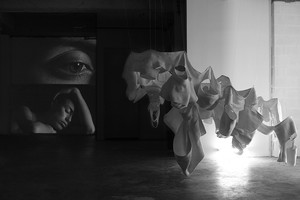In Yuki Harada’s Spiritual ‘Cave’
Written by Ksenia RundinQuoting Ludwig Feuerbach, Susan Sontag once argued in her essay ‘In Plato’s Cave’ that our age prefers the photograph to the real thing, the appearance before existence. Sontag claimed that photography has an unlimited power in modern society by replacing reality by virtue of being not only a mirror or interpretation of it, but also a relic of reality, something that is taken straight out of it. The philosopher could not even imagine how right and how wrong she was at the same time. Photographic image, indeed, has an unlimited power today but it does not seem to be a relic of reality anymore. It is the reality itself, bringing meaning to our existence by not mirroring it but rather building it up.
Brought up with the ‘Abanga-do’ spirit, the Japanese contemporary artist Yuki Harada explores the reality constructed by photographic images, taken by himself quite recently or by someone else a while ago but now placed in his numerous cluster. Re-examining the visual culture of a spiritual photograph, the artist attempts to frame his experience into an artistic endeavour. ‘Living’ a photograph by looking at it during a longer period, the artist establishes a relationship with it by participating in the event the image depicts without being a part of it. While a spiritual photograph contains a captured moment with a distinctive meaning, Yuki Harada tries to explore the moment on his own conditions within his own contemporary context. While capturing his own photos, whose amount could reach a thousand per day, Yuki Harada seeks to step into the unknown and spiritually capture the moment of ‘now’.
Seemingly, the artist travels between realities — form the one he observes before taking the photo to the other, which is ‘captured’ by his device. Is there anything in the juncture between these realities? Are we able to grasp it? Which of the realities is real? The questions are difficult to answer without bringing a deep philosophical discourse with an unequivocal metaphysical note in it. Another alternative is to creep in into Yuki Harada’s ‘cave’, to behold the artworks and perhaps, to ‘live’ the moment of your own ‘now’.
Please, tell us about yourself? Who are you and what is your professional activity?
I am contemporary artist based in Tokyo. I was born in 1989. Worldwide, this year is generally remembered as the end of the Cold War, meanwhile in Japan it also symbolises something else. It was the year when the long Shōwa era, which was named after the the reign of Emperor Shōwa (1926-1989) came to an end. On 7 January 1989, the day after the Emperor Shōwa passed away, the Chrysanthemum Throne was succeeded by Crown Prince Akihito, marking the start of the Heisei period, which would last till 2019.
Besides, Japan at that time was in the middle of the so called “bubble economy” caused by inflation of the real estate market and stock market. It was an era when urban culture with such movements as city pop and New Wave was booming. Furthermore, many of the motifs that I am interested in were also inspired by the visual culture that flourished in the “laboratory” of Postwar Japan.
Since 2012, I have been working on two projects. One is related to painting, the Lassen Project, studying Christian Lassen’s art, and the other one is about photography, the Ghost Photographies project. Through these two projects, I re-exam the part of the visual culture which influenced me and put it into a new form as my own representation.
Where did you study photography and/or art?
In retrospect, although I have studied art in many places, one of the room at my house was the initial direct impact to me, neither Museums nor Universities. In that room, there was a reproduction painting of an American painter Christian Lassen, depicting a dolphin. As a child, I was looking at this painting almost every day. Lassen’s name may not be that familiar to readers of this interview, but he actually was famous like Van Gogh or Picasso. His artistic fame could at that time be compared with one a rock musician would possess in Japan.
However, the painting appeared to be very strange, rejecting any of my empathy. I felt the gaze toward the picture bounce off like a mirror. I couldn't feel any empathy at all. But, for some reason, I was attracted to the painting and not being able to ignore it. Glancing back now, this seems to be my formative experience of art.
What do you consider to be the essence of contemporary art?
As a child being enchanted by Lassen's painting without understanding the meaning and having no logical explanation to that, I could not help but think about it. Finally, I understood the reason of the process of that constant thinking, what might, in my view, be the essence of contemporary art.
In one of your interviews you mentioned that photography had never really been your interest but rather a part of your personal life. Could you, please, develop it further and say how you became engaged with the art of photography and how photography is tied to your life?
Taking photos in my private life, sometimes makes me feel that my life is ‘irreplaceable’, but in fact it is just ‘commonplace’. For me, while my private photos are ‘irreplaceable’; the photos of someone else or of myself are merely ‘commonplace’. I feel that coming and going between these contradictory sensations will create a parallel imagination for ‘my or someone else's life that could have happened’.
You take about 500 to 1000 pictures a day. What are those pictures? How do you choose your compositions? Why so many?
I take an enormous number of pictures on my own account. When I feel like I am retaining ‘meta-data’ in digital data rather than taking any image, perhaps then I am in the zone of digitally stamping of the moment of ‘now’. Why? Probably because of anxiety.
What is the main idea behind your photographic voice?
In the realm of photography, I have only senses of 'I do not know’ or ‘I understand’. The former photos include those that are important in history, those that are artistically renowned, and those that are rare. The latter ‘known photos’, which are often relevant to me, are private images. Strictly speaking, it is often impossible to objectively prove that I am ‘related’ to a certain photograph, therefore, I might temporarily forget that the image is not ‘understood' but 'not known’ to me. Thus, for me, every picture is something unknown. I am worried about seeing any photo. Dealing with such unrecognisable, anxious, awe-inspiring feelings is what I face with photography.
Ghost Photos and Unsigned Photos, what are those? How did you come up with those ideas in your art practice?
My project, Ghost Photos, is based on the occult boom that occurred in Japan between the 1970s and 1990s. It was extensively featured on television and in magazines, and served as captivating entertainment.
Globally, the history of Ghost Photos dates back to the 19th century, but all psychic photographs that appeared in Japan during this period are characterised by being produced in the form of unsigned amateur photographs.
It is crucially different from Ghost Photos, which were made by professionals in the 19th century, and were based on the fact that beholders gave ‘excessive' meaning to casually photographed images. In a way, I thought that it had a structure similar to art photography, and became interested in the phenomenon.
Please tell us about your collection of unknown photos. What was the idea behind it and what has happened to the collection today?
Initially, I began researching amateur photography, which became a resource for psychic photography in Japan. My research embraced museums, library archives, flea markets and online markets, but I could not find any amateur photos taken relatively recently in any place.
Nevertheless, while continuing my research without giving up, I begun to understand that a large amount of these photos are discarded from ordinary households every day, and there are the garbage sorting companies who separate ‘sellable photos’ and ‘unsellable photos’. The former photos, such as those taken during the war, can be found in archives and markets. The later type of photos was taken relatively recently and was deemed to not having any rarity or market value.
Finally, I came to a conclusion that a large amount of ‘common images’ had been discarded, what made me think through the project and start figuring out how to save such ‘valueless information’ in the world.
What is Spirit Photography and how does it expand the photographic expression?
Spirit Photography has a similar meaning to Ghost Photos, but there is a linguistic nuance in the terminology of ‘Shinrei Shashin’ (’Spiritual Photography’). At the moment, it is difficult to accurately translate the Japanese words into another language, so I feel the need to create a new term.
I also am not too particular about expanding the expression of ‘photography’. Rather, I am interested in re-editing the possible connections between images and humans, just like considering how to deal with the ‘ordinary images’ mentioned earlier.
Could you tell us about the logic behind your exhibits, e.g. ‘Psychic Photography’ (2012), ‘Author Unknown’ (2017)?
When viewing Psychic Photo (or Ghost Photos), the spectator finds the spirit as an unknown author, who should not be there, while reading the meaning and story out of the image. These actions have a structure similar to when beholding fine-art photography, and I think that Psychic Photo might be in a sense an ‘alternative form’ of art.
Could you tell us about one of your latest exhibits ‘One Million Seeings' (2019)?
I started collecting the ‘unsellable photos’ that I mentioned earlier, and now the number of the images, which I temporarily store, is reaching about 100.000. Most of them have lost meta-data such as the photographer, subject, location, motivation, and timing, and the images are meaningless — hard to know how to start getting a clue about them. Therefore, they are photos that are difficult to ‘view’ on the one hand, but on the other hand, they must have been ‘irreplaceable’ for somebody. Hence, through this work I tried to perform intimate ‘appreciation’ of those photos by playing the eyes of that someone. In that case, I imposed on myself the rule of ‘seeing until I could establish a relationship with the photo’, ongoing for 24 hours without sleeping or resting, 7 days a week with the non-stop video without editing. In the video work I try to record the ‘relationship between the image and a human’ instead of exposing the image on its own.
Do you do collaborations with other artists or maybe across industries?
I cannot go into details in this interview, but in the art project on Christian Lassen I felt like I was collaborating with the artist in a way. I am currently working on a visual book that looks back on the graphics of the ‘Heisei’ era (1989-2019) based on Lassen’s work.
I have been thinking about making art works like movies for a long time. Especially in commercial films created by a large number of people. There are cases, where smaller frameworks such as ‘movie scores’ and ‘movie picture arts' co-exist within a larger framework of the 'movie work'. In the same way, I would like to focus on art as a project with a larger framework, instead of limiting myself to the old, small-framework.
What are your future projects?
I have talked a lot about the project I have worked with so far—besides all above, good balance is important—and most recently I am focusing on creating works with a small framework—One Million Seeings is an example.
However, when it comes to new projects, we have focused on two main ones since 2012. Soon we will start a new project with the theme of ‘island'. To prepare for this, in 2019 we went to Hawaii, a neighbouring island about 6.500 kilometers east of Japan. In 2020 we plan to conduct research and exhibitions in Taiwan which lies 2.000 kilometers south of Japan and is also a neighbouring island.
Until now, we have taken up motifs that are culturally positioned on the ‘periphery’, but now we are focusing on the space that can be positioned on the ‘periphery’ in a literally geopolitical sense, what will be our third project then.

